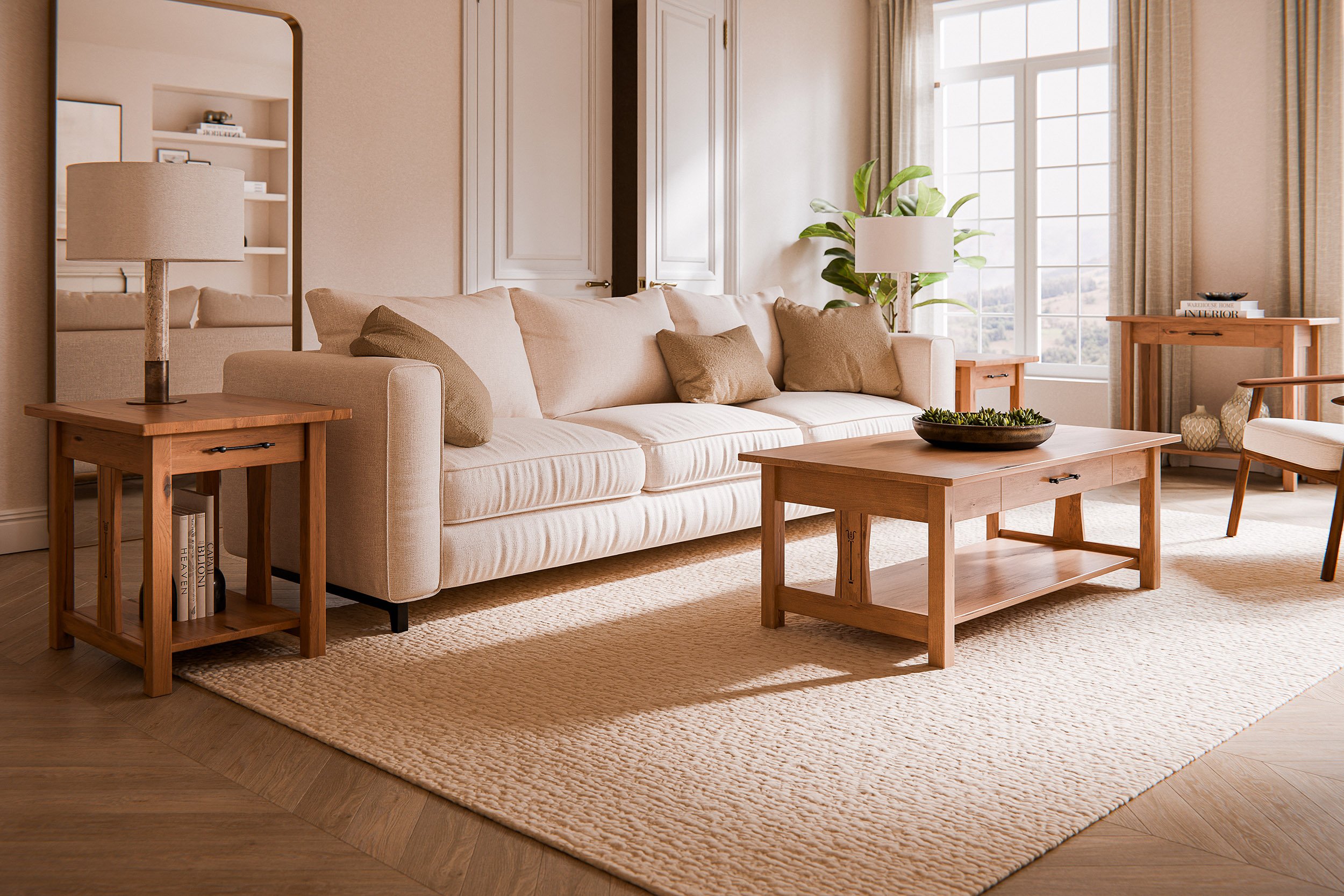
ZEBACH
/ zeh’ - bakh /
Meaning, by implication, a sacrifice
- the act of giving up something valued for the sake of something else regarded as more important or worthy.
Why do we say this is our Craftsmen’s Signature? It is because they live out this “זבאך“ every day. Every morning when they pick up their hammer, their sander, the staining cloth we realize they are sacrificing something for you. Their sweat and efforts are poured into every grain of wood and engraved in every line of this emblem. They are pouring their time and talents into a vision—a vision for crafting exceptional value while living out exceptional values for you.
It’s because of their sacrifice that we can have this pleasure of seeing your satisfaction and delight in experiencing something well made.
Value crafted with integrity.
For your pleasure,
With זבאך,

There are 2 elements to our Craftsmen’s “Signature” emblem:
The meaning (what it stands for), and,
The design (what inspired the look)
The Meaning
At the core of Life and Growth dwells this key.
There is no realm of life that this truth does not touch;
No culture, company, clan, or people, plant or life form is exempt.
It is what our hard-working craftsmen do every day.
It is emblematic of the Core Focus and Values they demonstrate by their daily actions.
Consider this our Craftsmen’s Signature.
The Emblem is designed to represent this truth.
The Crown at the root represents this secret of זבאך (zeh’-bakh).
Out of this Root emerges the vital life-giving Channel of Connection and Communion, bringing life from the Root to the emerging Fruit.
The Fruit represents all the fullness and wonder of Life, it is all growth and creativity that springs from this one Great Source.
It is our Craftsmen’s זבאך (zeh’-bakh), which brings this unique, personal, and enduring handcrafted furniture for you to enjoy!
With Pleasure,
Our Craftsmen
The Design
This Signature emblem is very intentionally designed. It is intended to reflect both our beginnings as a company and our heritage as a distinct people. A heritage that began hundreds of years ago.
Our creation as a family of Craftsmen is inseparably linked with the traditional Mission style. Many of the first designs of the first Master Craftsmen our founder Elam Esh on his fathers’ farm were built in this tradition. To reflect this crucial part of our history and as a salute to the origins of the Mission design, we dug into the annals of history and found some antiques at local shops that had the embossing patterns that Stickley added to his Mission furniture at the turn of the 20th century. Notice on the samples below how the tall flowering stems and bases at the bottom of many of these original designs are reflected in our unique Signature emblem.
In seeking a representation that would be synonymous with our heritage we were inspired by the well-known *PA Dutch Hex signs. While we do not believe in the superstitions that surround some of these, we are intrigued by the artistic nature and meaningful history behind them. These Hex signs were often painted on the sides of the barns of some of the early Dutch settlers in this area. They not only reflect our German heritage but are also a nod to our farming background. We do so humbly and with deep appreciation for the heritage that we have been graced with. Like the Harvey Ellis patterns on the original Stickley items you will notice on the examples below how these elements are reflected in our unique Signature emblem.
Above all this Signature is emblematic of זבאך. The finishing touch, the crown at the bottom was added in praise for the greatest of all “Sacrificers,” Who literally gave His all— for us all.
About 300 years ago, groups of religious refugees from the Rhine region of Germany migrated to southeastern Pennsylvania. These settlers, peasant farmers, came to take advantage of the religious freedom being offered by William Penn. They included Amish, Mennonites, Lutherans and other Reformed groups. These people became known as "Pennsylvania Dutch."
Bringing their old-world customs and traditions to Pennsylvania, the "fancy" farmers decorated their distinctive bank barns with large, colorful geometric patterns. Mystical bird and floral designs graced birth and marriage certificates, family bibles and some furniture. These very colorful symbols, now called Hex Signs, had meanings or "legends." A design was selected based on both its aesthetics and meaning for the family.
Some of the more popular symbols included, but not limited to: sun wheel for warmth and fertility, hearts for love, birds (called Distlefink) for good luck and happiness, tulips for faith and stars for luck. The specific colors used also had meaning: red for your emotions, yellow for love of man and the sun, green for growing things, blue for protection, white for purity, and brown for Mother Earth.

“Walk in love, as Christ also loved us, and has given himself for us an offering and a sacrifice (זבאך - Zebach) to God for a sweet-smelling savor.”
Ephesians 5:2












